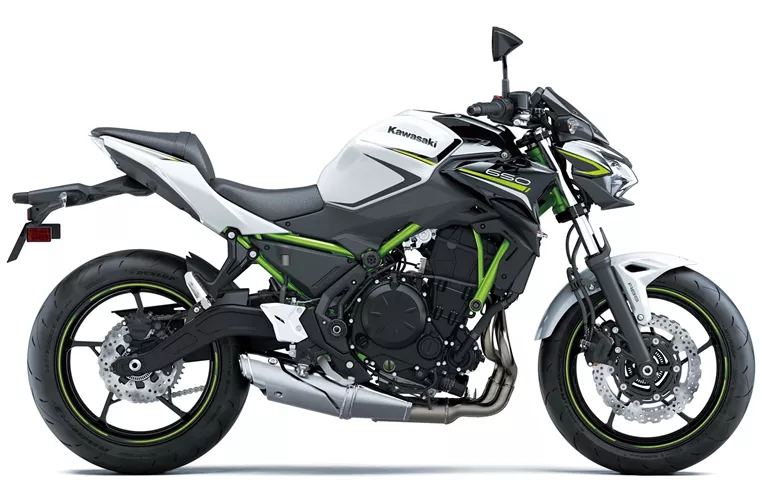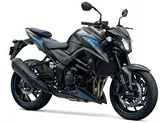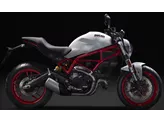Kawasaki Z900 2017 vs. Kawasaki Z650 2020

Kawasaki Z900 2017
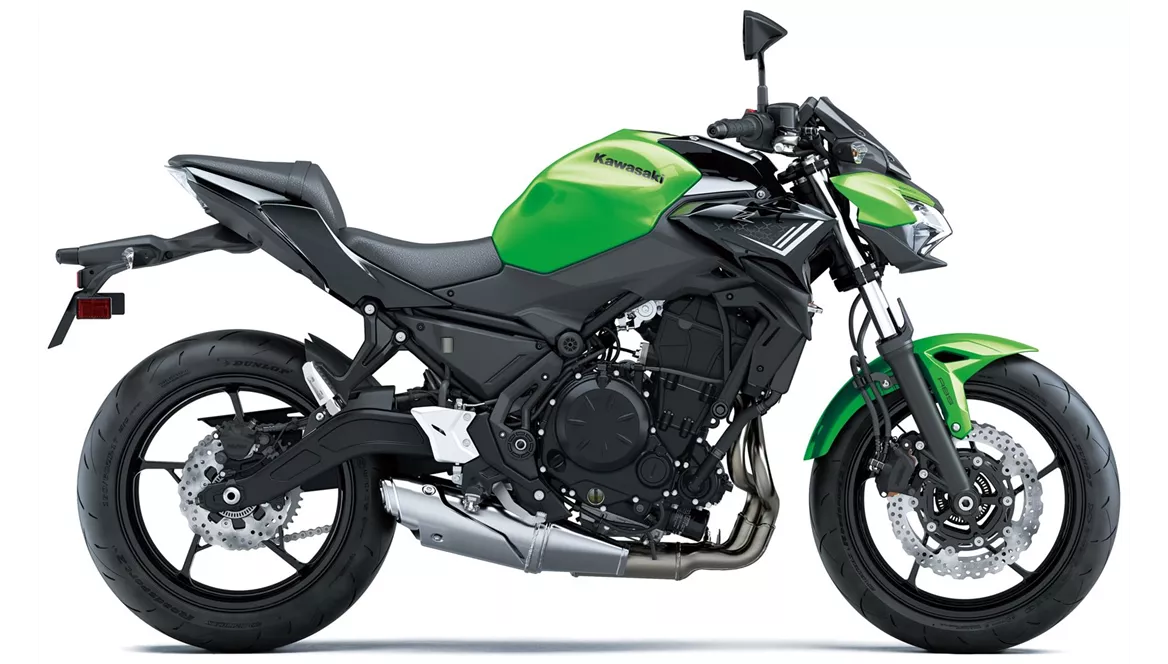
Kawasaki Z650 2020
Visão geral - Kawasaki Z900 2017 vs Kawasaki Z650 2020
The Kawasaki Z900 model year 2017 and the Kawasaki Z650 model year 2020 are both naked bikes from Kawasaki, but they have some notable differences in terms of specifications and features.
Starting with the Kawasaki Z900 2017, it is equipped with an inline 4-cylinder engine with a displacement of 948cc. It produces a power output of 125.4 HP and a torque of 98.6 Nm. The fuel system is fuel injection, and the cooling system is liquid-cooled. The chassis is made of steel with a double cradle frame. The front suspension consists of a telescopic inverted fork, while the rear suspension is a swingarm with a monoshock that offers adjustment options for preload and recovery. The braking system includes dual disc brakes with a diameter of 300mm and four-piston calipers. The bike features ABS for advanced rider assistance. The dimensions include a front tire width of 120mm, a front tire diameter of 17 inches, a rear tire width of 180mm, a rear tire diameter of 17 inches, a wheelbase of 1450mm, a seat height of 795mm, and a curb weight of 210kg (with ABS).
On the other hand, the Kawasaki Z650 2020 is powered by an inline 2-cylinder engine with a displacement of 649cc. It generates a power output of 68.2 HP and a torque of 65.7 Nm. Similar to the Z900, it has a fuel injection system and a liquid-cooling system. The chassis is made of steel with a tubular frame. The front suspension consists of a telescopic fork, and the rear suspension is a swingarm with a monoshock that offers preload adjustment. The braking system includes dual disc brakes with a diameter of 300mm and dual-piston calipers. ABS is also included for advanced rider assistance. The dimensions include a front tire width of 120mm, a front tire diameter of 17 inches, a rear tire width of 160mm, a rear tire diameter of 17 inches, a wheelbase of 1410mm, a seat height of 790mm, and a curb weight of 187.1kg (with ABS).

Kawasaki Z900 2017
In terms of strengths, the Kawasaki Z900 2017 is praised for its ingenious naked bike chassis design, magnificent appearance, and a well-tuned engine with responsive acceleration and perfectly sized torque. It offers a great balance between performance, price, and practicality.
On the other hand, the Kawasaki Z650 2020 boasts a powerful twin-cylinder engine, aggressive intake noise, compact dimensions, low seat height, stable chassis, TFT display with connectivity, and a mature appearance.
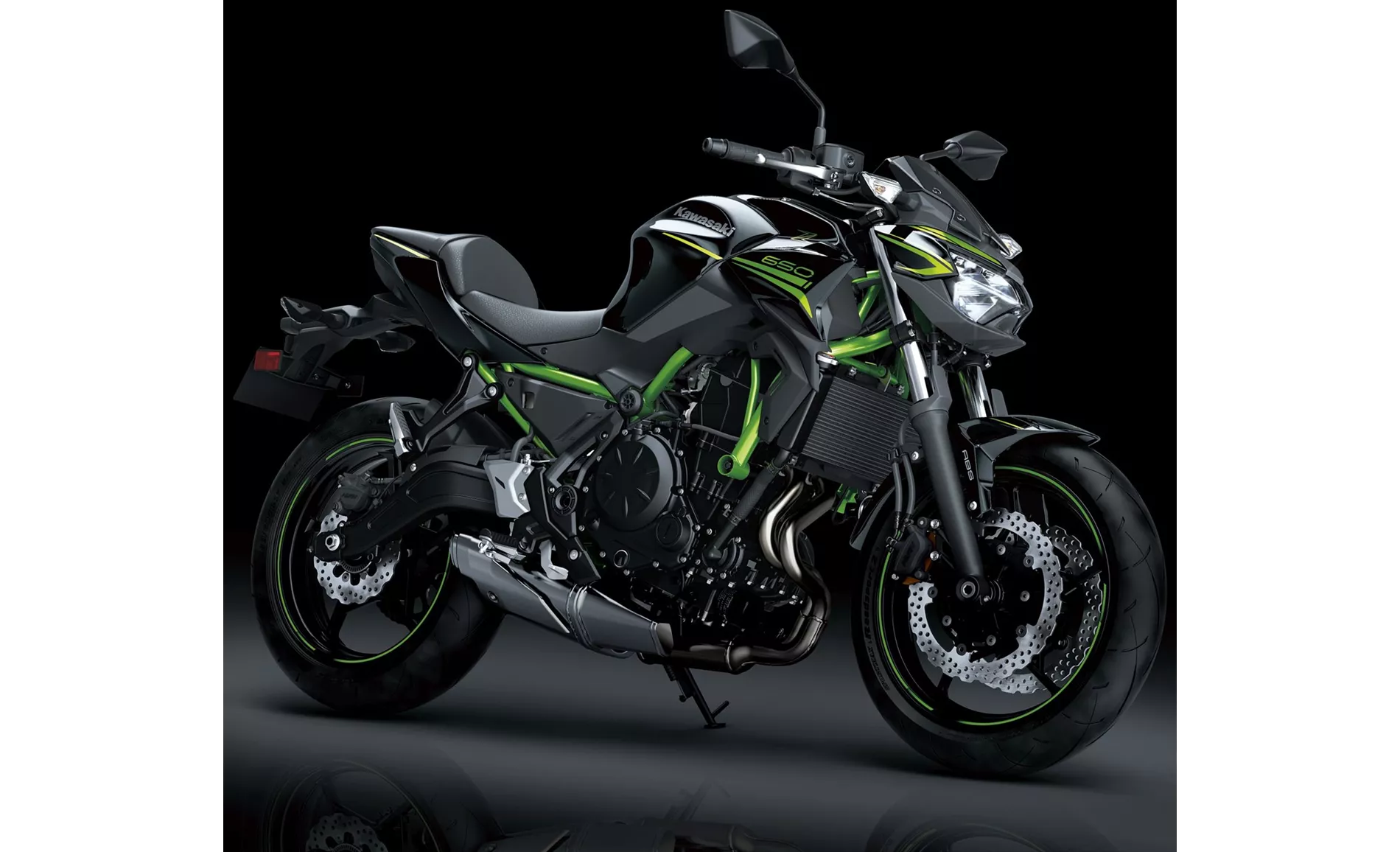
Kawasaki Z650 2020
However, the Kawasaki Z900 2017 has a weakness in the form of a narrow knee angle for tall riders, which may require ordering a different seat for improved comfort.
Similarly, the Kawasaki Z650 2020 has a weakness in the form of a point of pressure on the front brake, which may cause discomfort for tall riders. Additionally, the Rideology application is not considered 100% sophisticated.
In conclusion, the Kawasaki Z900 2017 and the Kawasaki Z650 2020 are both impressive naked bikes from Kawasaki, each with its own set of strengths and weaknesses. The Z900 offers a more powerful engine and a higher level of adjustability in terms of suspension, while the Z650 provides a more compact and agile package with modern features. Ultimately, the choice between the two would depend on the rider's preferences and priorities.
Especificações técnicas Kawasaki Z900 2017 em comparação com Kawasaki Z650 2020
Prós e contras em comparação
Prós e contras em comparação
Kawasaki Z900 2017

Uma mota incrivelmente bem concebida. Foi objeto de muitos testes e de muita atenção aos pormenores. Tem exatamente a potência certa, o chassis certo e o visual certo. Uma moto naked de sucesso geral que o fará feliz durante muito tempo. Se quiseres, podes conduzi-la de forma simples e fiel, mas se quiseres, também podes conduzi-la muito depressa e ela roda como o diabo. É óptima!
Kawasaki Z650 2020
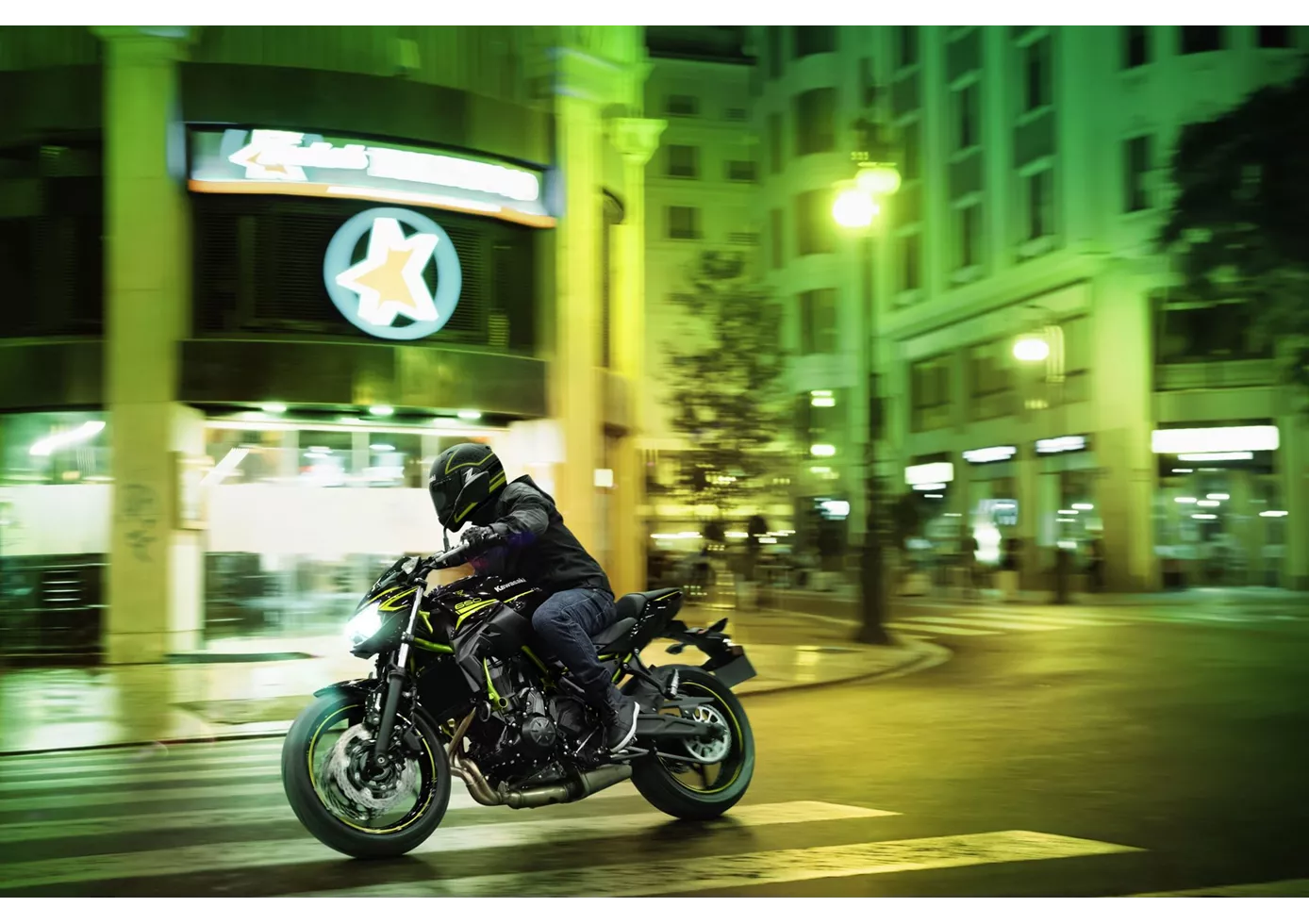
É simplesmente maravilhoso o que a Kawasaki juntou num pacote completo com a nova Z650. Os componentes técnicos podem não impressionar individualmente, mas em conjunto formam uma mota agradavelmente neutra que todos irão apreciar. Não há idiossincrasias desagradáveis - simplesmente uma mota naked que funciona muito bem em estradas rurais sinuosas. Claro que o ecrã TFT, que não encontramos na concorrência neste momento, é uma mais-valia, tal como o aspeto adulto, que está fortemente orientado para os modelos Z maiores. Apenas o ponto de pressão do travão dianteiro poderia ter sido mais claramente definido - mas não se pode ter tudo nesta gama de preços.
Comparação de preços Preço médio de mercado Kawasaki Z900 vs Kawasaki Z650
There are a few key differences between a Kawasaki Z900 2017 and a Kawasaki Z650 2020. In terms of price, the actual average price of a Kawasaki Z900 2017 is about 38% higher. A Kawasaki Z900 2017 experiences a loss of 650 EUR in one year of ownership. This is offset by a loss of 40 EUR for a Kawasaki Z650 2020. Compared to Kawasaki Z650 2020 there are more Kawasaki Z900 2017 bikes available on the 1000PS.de Marketplace, specifically 43 compared to 21. It takes less time to sell a Kawasaki Z650 with 80 days compared to 85 days for the Kawasaki Z900. Since model year 2017 1000PS.de editors have written 46 reviews for the Kawasaki Z900 and 31 reviews for the Kawasaki Z650 since model year 2017. The first review for the Kawasaki Z900 was published on 11/11/2016 and now has more than 93 200 views. This compares to more than 25 000 views for the first review on Kawasaki Z650 published on 08/11/2016.





